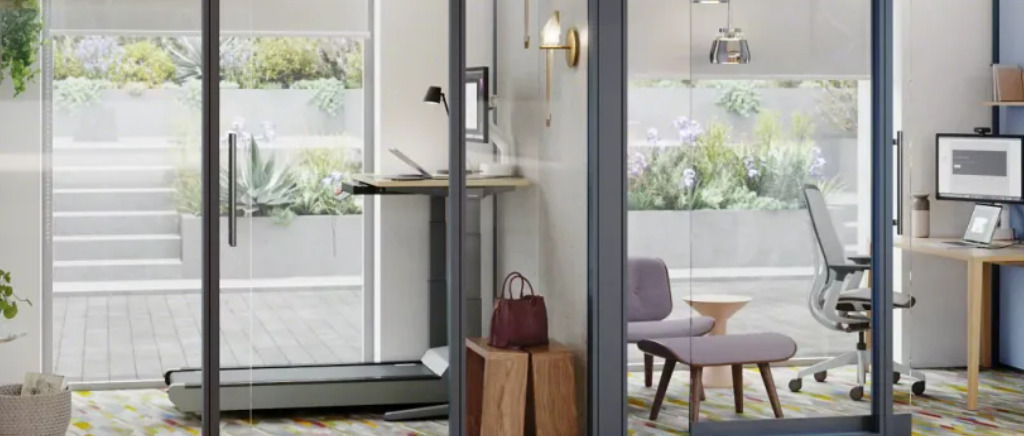In today’s office environments where footprints continue to shrink, distractions are an ever-present challenge. Despite the modern advancements designed to enhance productivity, employees often find themselves battling interruptions that hinder their focus and efficiency. Understanding the negative impact of these distractions and implementing strategies to counteract them is essential for fostering a productive and healthy workplace.
The Toll of Distractions on Productivity
Distractions at work can have a profound impact on productivity. Research shows that employees lose up to 720 work hours per year due to distractions, equating to nearly three full work weeks of lost productivity annually. After being distracted, it takes an average of 23 minutes to fully refocus on the original task. This time lost to distractions accumulates, significantly reducing overall productivity and efficiency.
Multitasking, a common result of frequent distractions, leads to a 40% drop in productivity. Furthermore, distracted employees are twice as likely to make mistakes, which not only affects the quality of their work but also contributes to feelings of overwhelm and stress. Constant interruptions can lead to burnout, creating a cycle of decreased productivity and mental well-being.
The Organizational Impact
For organizations, the cumulative effect of distractions translates to substantial financial losses. Excessive noise levels alone can hinder concentration and reduce productivity by up to 66%. Coworker interruptions and poorly designed workspaces exacerbate the issue, leading to increased errors, stress, frustration, and reduced creativity. These factors not only impact individual employees but also hinder overall organizational performance.
Common Workplace Distractions
- Noise: Excessive noise levels disrupt concentration, reducing productivity and increasing stress.
- Coworker Interruptions: Brief interruptions can disrupt workflow, requiring significant time to regain focus and leading to increased errors and stress.
- Poorly Designed Workspaces: Lack of privacy, sound insulation, and ergonomic considerations can cause constant interruptions, physical discomfort, and decreased focus.
Strategies to Combat Distractions
Organizational Strategies
- Dedicated Focus Time: Organizations can help by establishing specific times when employees can work uninterrupted, fostering an environment of deep focus and productivity.
- Open Office Layout Considerations: By implementing soundproof booths, sound masking, acoustic panels, or quiet zones, organizations can minimize noise and create areas for focused work.
- Employee Well-Being Programs: On the mental health side, organizations can support their employees by offering stress management workshops and wellness initiatives to improve overall focus and well-being.
Individual Strategies
- Create a Focused Workspace: Employees can take matters into their own hands by organizing their workspace to be free from clutter and using noise-canceling headphones to block out environmental noise.
- Time Management Techniques: Employing methods like the Pomodoro Technique, which involves working in focused 25-minute bursts, can enhance concentration.
- Digital Detox: If employees find themselves increasingly distracted, they can schedule specific times for checking emails and social media to avoid constant interruptions.
- Mindfulness and Meditation: Whether at their desk, on a walk, or in a wellness room, employees can practice mindfulness and meditation to improve their focus and reduce stress.
- Clear Communication: By clearly communicating thier work hours and availability to colleagues, employees can minimize interruptions.
Office Solutions to Reduce Distractions

Sound Masking
Sound masking has proven benefits in reducing distractions and enhancing focus. It effectively masks unwanted noise, leading to fewer interruptions and improved concentration. Additionally, it enhances speech privacy, making conversations less intelligible and reducing overall noise levels. This contributes to higher employee satisfaction, improved privacy, and increased productivity.

Acoustic Panels
Acoustic panels are widely used to reduce noise reverberation and maintain confidentiality in various settings, such as offices, studios, and classrooms by absorbing, blocking, and covering noise. They can also provide visual privacy in open offices, creating defined spaces without complete physical separation. This helps to create a quieter and more focused work environment.

Reservable Focus Rooms
Focus rooms offer employees control over their work environment, which is highly valued. These rooms provide a quiet escape from interruptions, allowing for improved concentration and cognitive performance. They also contribute to enhanced well-being by reducing stress and providing a space for uninterrupted focus. Making these focus rooms reservable provides in-office and hybrid employees much needed control over their work environment.
Conclusion
Distractions at work can significantly impact productivity, mental health, and organizational performance. By understanding the negative effects of distractions and implementing strategies to mitigate them, both organizations and individuals can create a more focused, productive, and healthy work environment. Embracing solutions such as sound masking, acoustic panels, and reservable focus rooms, along with fostering good organizational and individual practices, can lead to a significant improvement in workplace well-being and efficiency.
Receive our Newsletter
To receive our newsletter, including new editions of spaces and other digital content, fill out the form:



